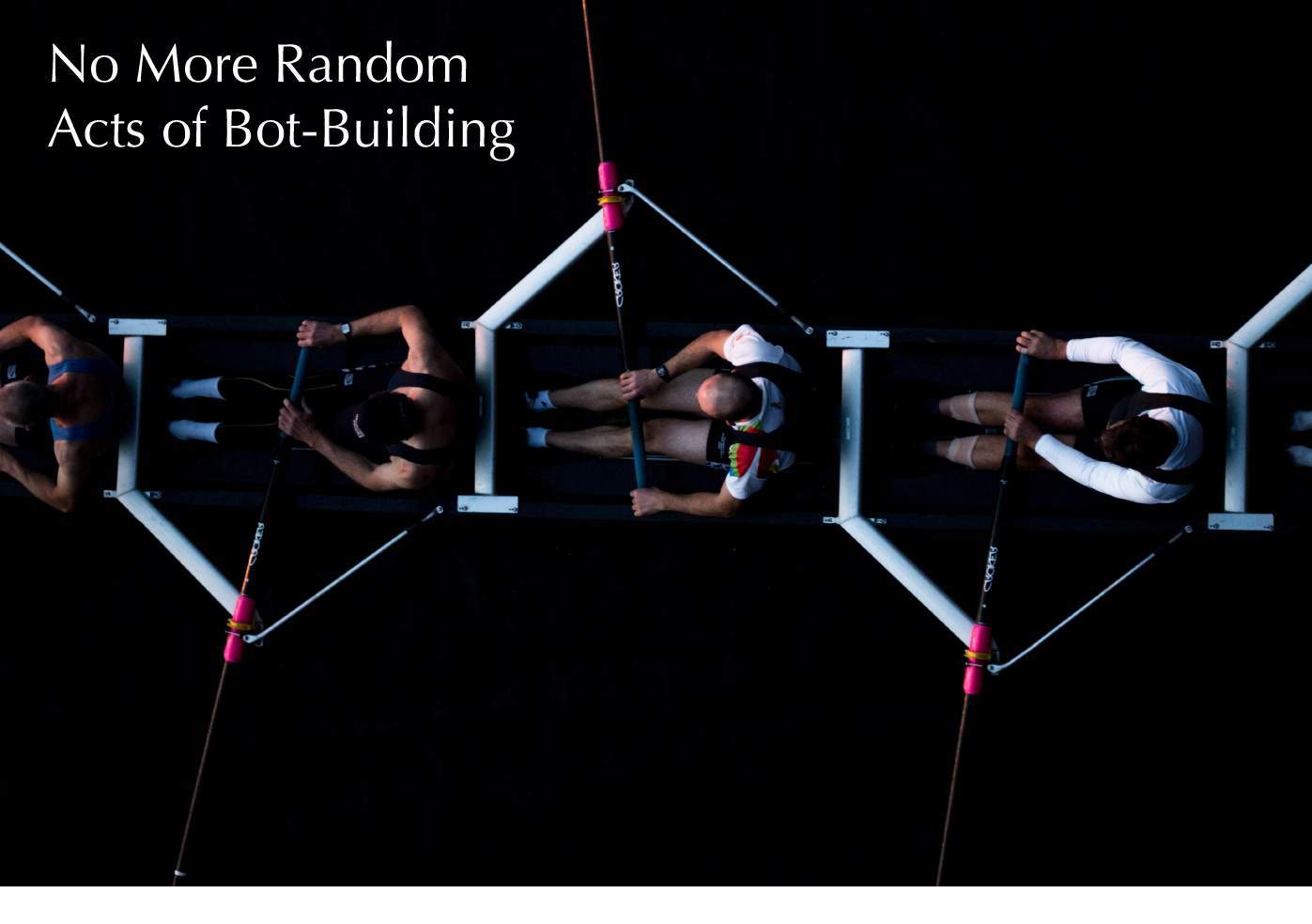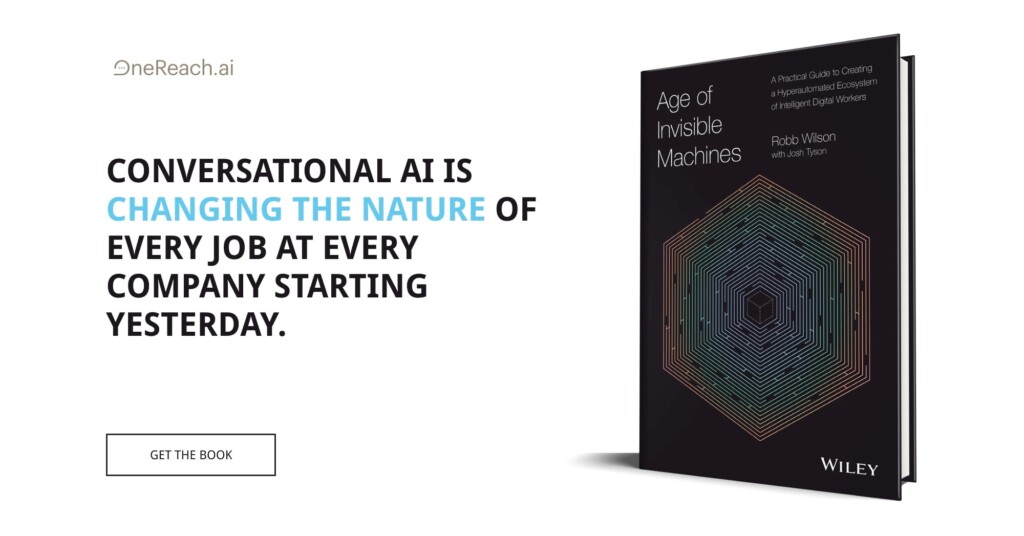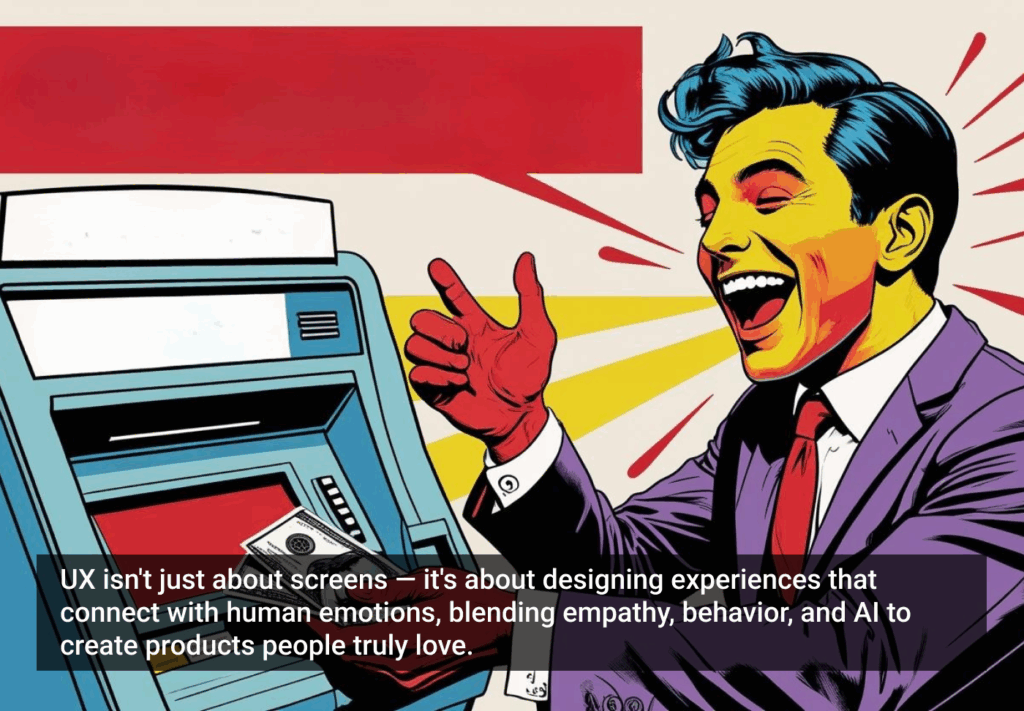So your organization has a bot problem. Have no fear, this is a common malady in the brackish waters where AI and automation swirl together. As UX practitioners know, these intertwined technologies will figure heavily into the future of every organization on the planet. Chatbots are easy to set up and seem to check both boxes, but even an entire fleet of independently operating chabots can’t be thought of as intelligent automation.
If your bot problem is just that—a group of bots working in their own little towers and providing very limited value to your customers or your workforce—you likely feel like you’ve been chasing windmills. These random acts of botting are consistent pain points for nearly every organization that commits them, but there is a way to bring bots together in harmony. Leveraging many of the processes experience designers are already familiar with, you can create the type of automation that works within the framework of your company, giving customers meaningful experiences and reducing the number of menial tasks team members have to deal with.
To stay competitive, companies need to avoid random acts of technology and adopt a strategy for building an intelligent ecosystem of digital workers. A well-designed ecosystem can interact directly with customers, team members, and with one-another, automating services and systems. Creating one is no small undertaking, but tools exist that can leverage the strengths and knowledge of your entire workforce to achieve what Gartner calls hyper-automation.
What is Hyper-Automation and How Does an Organization Achieve It?
The best way to think of hyper-automation is as the sequencing of disruptive technologies to automate tasks within an interconnected ecosystem of high-functioning bots. The tools an organization uses to develop an intelligent ecosystem of digital workers are novel in their own right, making the process more sophisticated, but also more engaging and manageable. Here are three of the key components you need to get it right:
Conversational AI
The impact of this technology—not just on automation but on our daily lives—warrants it’s own book. Alexa, Siri, Google Voice, et al are only scratching the surface when it comes to the full potential of conversational AI. A seamless interface that works on human terms, not in computer language. This is one of the disruptive technologies that is sequenced to achieve hyper-automation. Sequencing conversational AI effectively takes it well beyond bots interacting with customers in a limited capacity. To build an intelligent ecosystem, team members converse directly with bots—or intelligent digital workers (IDWs)—teaching them how to perform complex tasks and giving them the context necessary to make independent decisions.
Novel Co-Creation
With the power of conversational AI, team members co-create with IDWs to automate the systems they know best. As they design microservices that sequence into automated services, they are contributing to a shared library that can be modified to perform new tasks while still working within the ecosystem at large. The process is guided by a core-creation team that brings the entire organization into the fold.
Shared Strategy
For these efforts to succeed, there needs to be a constant flow of ideas and direction. An organization’s strategic liaison moves between camps, assisting and evangelizing to designers, stakeholders, and the departments within an organization that are being automated. Realizing that hyper-automation will affect everyone working for the company and that all departments will pull from a shared library of skills, the person in this role spends their days moving between departments, analyzing roles and tasks, and translating those jobs into a framework of automation.
The Right Tools
Creating an ecosystem like the one we’re describing requires a code-free system for building a shared library of microservices that can be endlessly reconfigured and sequenced into useful services. A no-code approach makes it vastly easier for every member of your organization to contribute to the automation of tasks that they understand best. This is what allows hyper-automation to take root within your organization and continue to grow.
How Big is the Payoff?
While the ROI on creating an intelligent ecosystem of digital workers would be hard to overstate the bigger incentive here is that companies implementing hyper-automation successfully are putting themselves in a different league than their nearest competitors. These organizations are creating experiences for customers and internal users that are more than just rewarding, they are transformational.
Hyper-automated companies are not only accomplishing far more with far less effort, it’s also easier for them to further automate new and more sophisticated processes and tasks. So in the short term, the payoff is that your organization gets to remain competitive. The long term-dividends, it would seem, have the potential to compound exponentially.
Want to learn more about hyper-automation? Check out the rest of our mini-white paper, No More Random Acts of Bot-Building.









